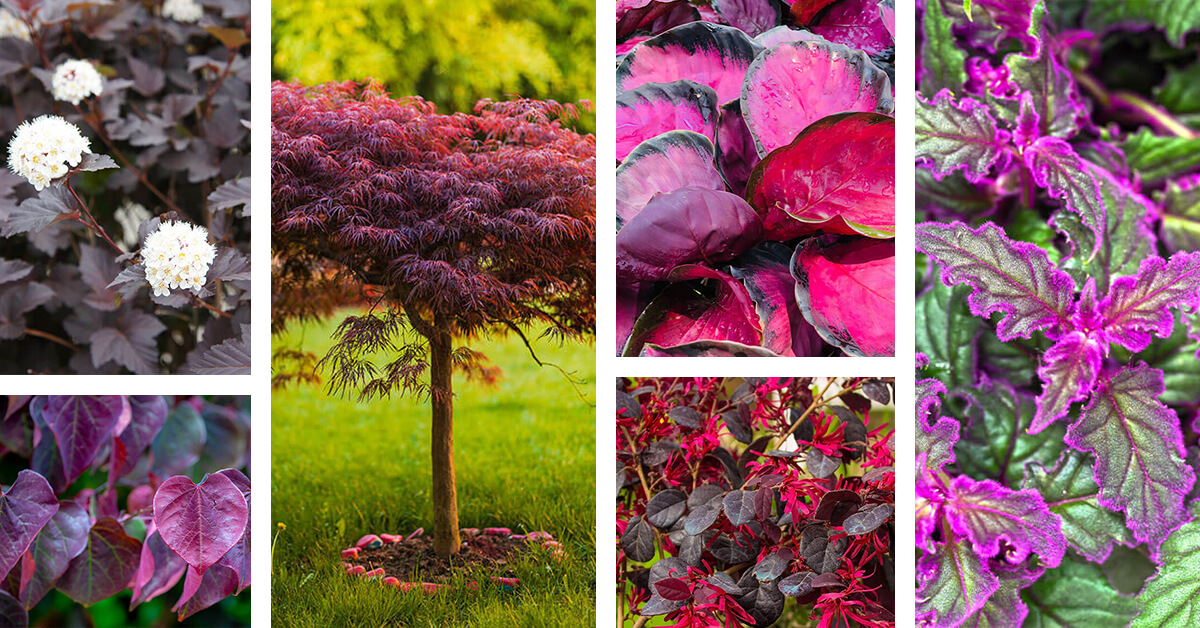If you are a gardener that loves purple hues, then you are likely familiar with the many plants that offer purple blooms. But did you know that there is also a surprisingly large group of plants that offer purple foliage as well? If not, then this is the article for you. Read on to learn about the 25 plants with purple leaves that you should consider for your next planting project.
Key Takeaways
Plants with purple leaves stand out for their unique beauty, and they come from many different plant groups. As such, you can expect each entry on our list of plants with purple leaves to come with a distinct set of growing requirements and general information. However, you’ll also find that these five key takeaways come up repeatedly in this list as well:
- Plants with purple leaves come in many forms, including perennials and woody shrubs and trees.
- Plants with purple leaves can have a significant amount of variation in foliage color.
- Purple-leaved plants can also have fantastic purple blooms.
- Both evergreen and deciduous plants can have purple leaves.
- Many plants with purple leaves are cultivated or hybrid plant varieties.
25 Fantastic Types of Plants with Purple Leaves that Come in Many Forms
1. Azalea (Rhododendron ‘Conlee’ Autumn Amethyst)
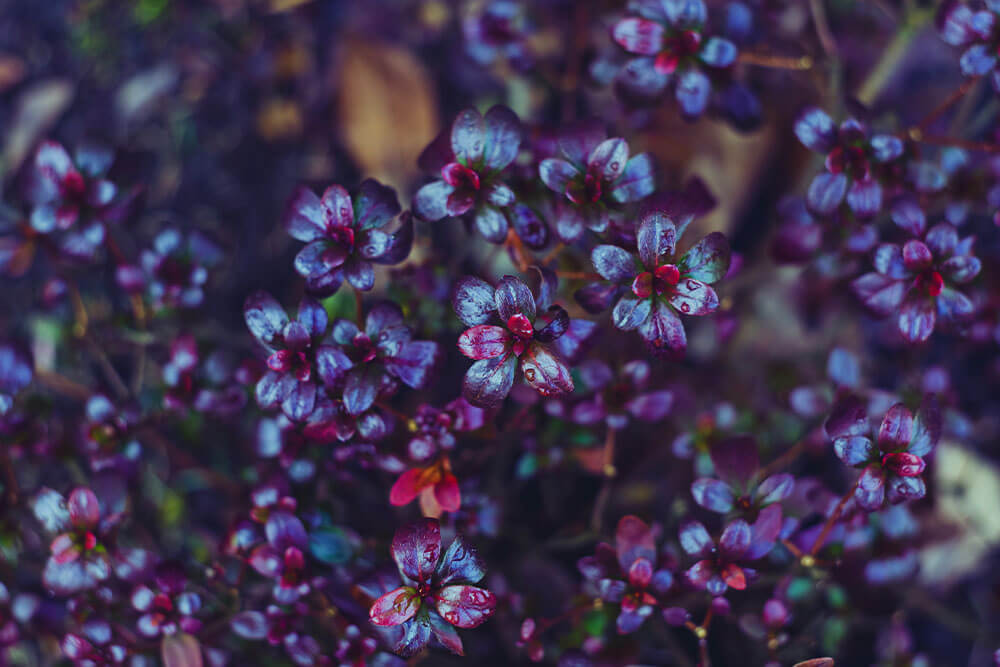
The plant that we’ll start our list off with is one of the most impressive of all. The azalea variety that goes by the botanical name Rhododendron ‘Conlee’ AUTUMN AMETHYST not only has amazing foliage that changes from greenish purple in the summer to a darker purple in the winter, it also has amazing blooming characteristics as well. This azalea is part of a cultivated group of azaleas that have the ability to bloom during the typical spring bloom time and may bloom again later in the year as well. That combination of flowers and foliage makes this azalea an evergreen shrub any purple lover can’t miss.
2. Bugleweed (Ajuga reptans ‘Catlin’s Giant’)
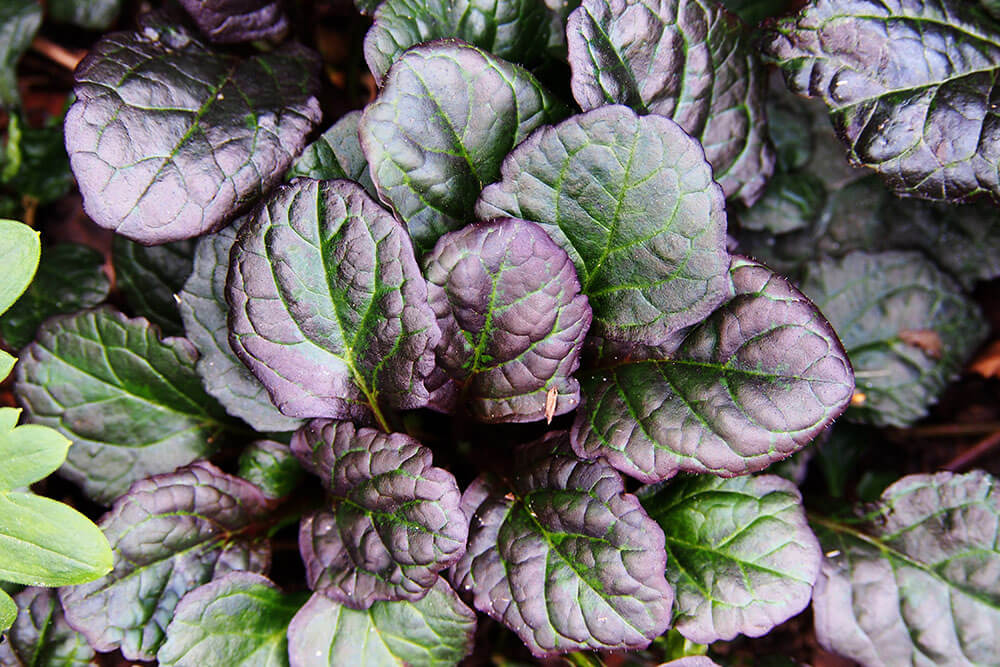
Have you ever fantasized about having a beautiful purple carpet in your outdoor living space? If so, you should know that that image is far easier to achieve than you might first expect. All you need to do is find the right plants for the job. One of the best plants to grow as an evergreen perennial ground cover is the bugleweed variety known as ‘Caitlin’s Giant.’ This cultivated plant grows just a few inches tall and survives throughout hardiness zones 3 through 10, meaning that it is a viable planting option for most people throughout the United States.
3. Chinese Fringe Flower (Loropetalum chinense var rubrum ‘Zhuzhuo Fuchsia’)
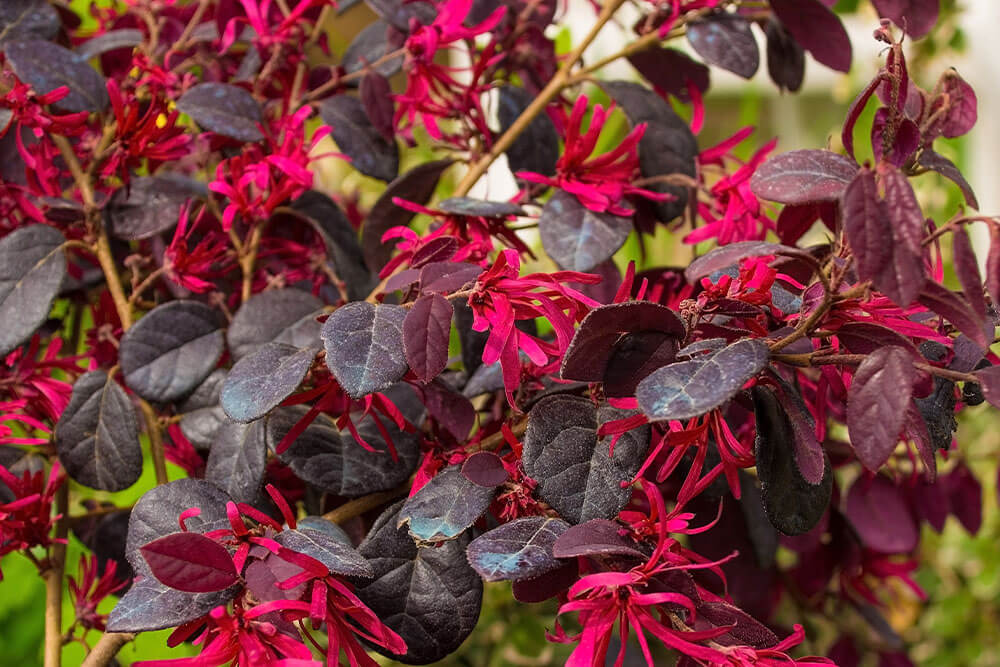
Although this is a list of plants with purple leaves, and this plant certainly meets that qualification, it is the combination of the flowers and the foliage during the bloom time that makes this plant spectacular. The leaves of the Chinese fringe flower have a pleasant oval shape and a deep purple color. That shape and deep shade make for a perfect contrast to the vibrant, textural effect that the flowers create. Those blooms are frilly and have a vibrant magenta color that is sure to capture your interest.
4. Coleus (Coleus)
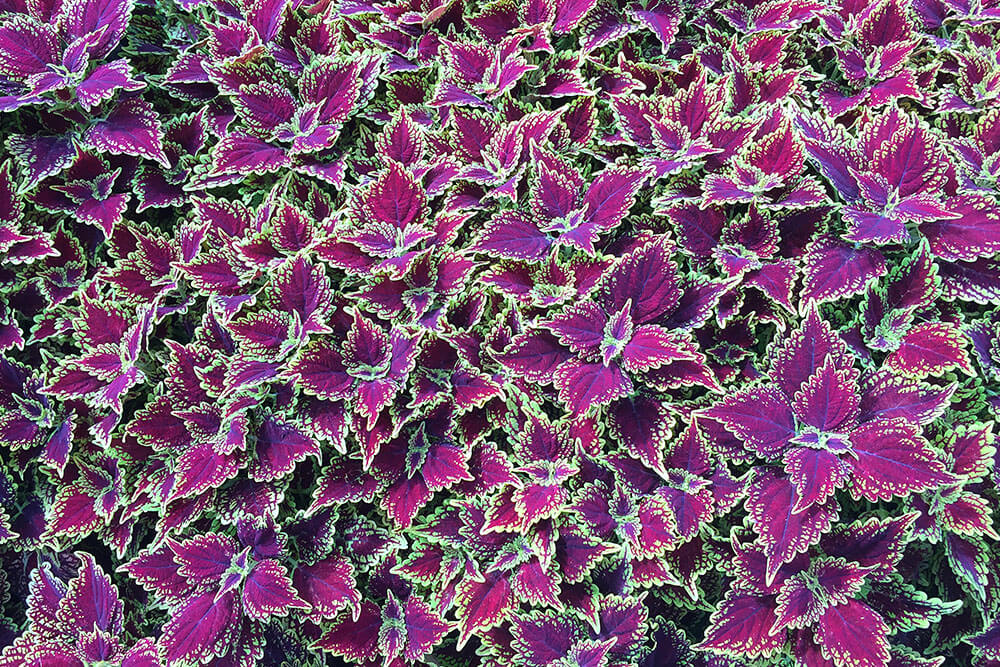
Anyone who has taken time to research ornamental foliage plants has likely come across coleus. Simply put, coleus plants offer some of the most impressive and brightly colored foliage displays that you can imagine. The leaves of a coleus plant typically have multiple colors that form mesmerizing patterns. Among those many color options, you are sure to find versions that have purple as an accent or as a main color on the leaves. However, since this plant needs warm weather year-round, you’ll need to grow it indoors.
5. Coral Bells (Heuchera)
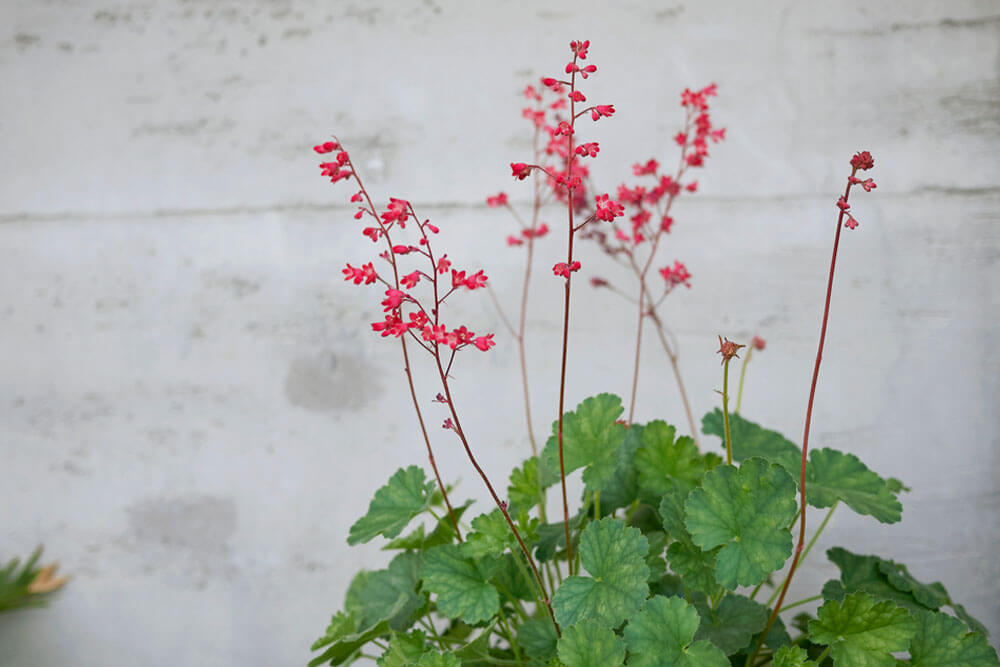
In many ways, coral bells is the perfect perennial species to grow in small spaces. This plant usually reaches about a foot tall or less at its largest, and it is also quite adaptable to shady conditions. For many, the most valuable feature of the coral bells plant is the bell-shaped blooms. However, there are also those who appreciate the fact that coral bells comes in varieties that have either green or dark purple leaves. Overall, this makes the coral bells plant a cute and convenient plant whether you love purple or not.
6. Crabapple (Malus)
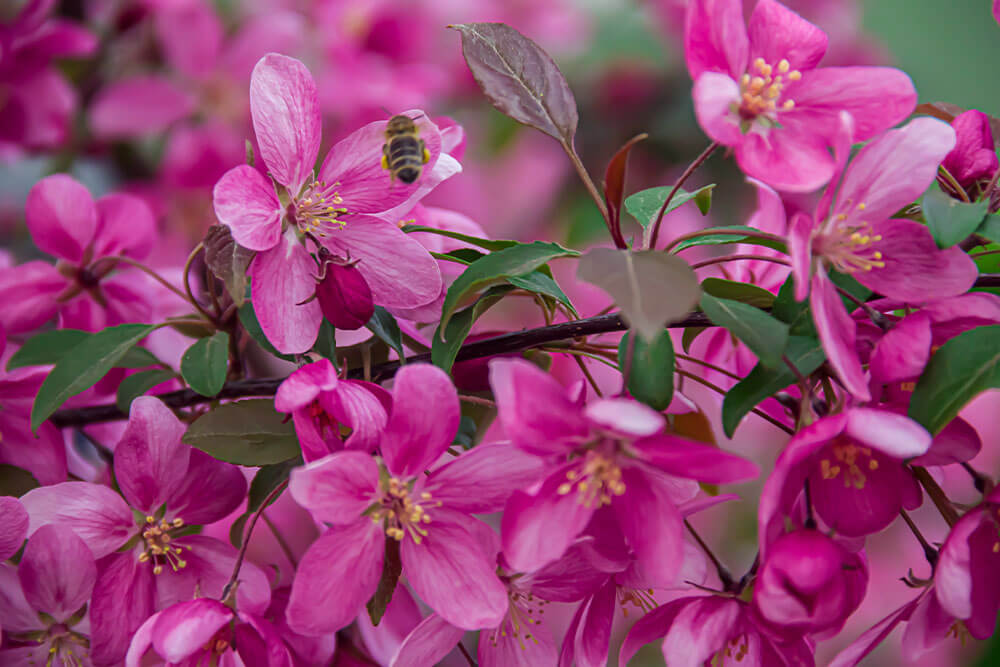
You are likely aware that crabapples are some of the most impressive flowering trees in the early spring landscape. During that time, crabapples can bloom with flowers that are either white or varying shades of pink or purple, depending on the variety. However, what some people don’t know is that there are also crabapple varieties that have purple foliage rather than green leaves. These crabapple versions are able to provide a large patch of color in the landscape during both spring and summer.
7. Crimson Pink Calathea (Calathea roseopicta ‘Rosy’)
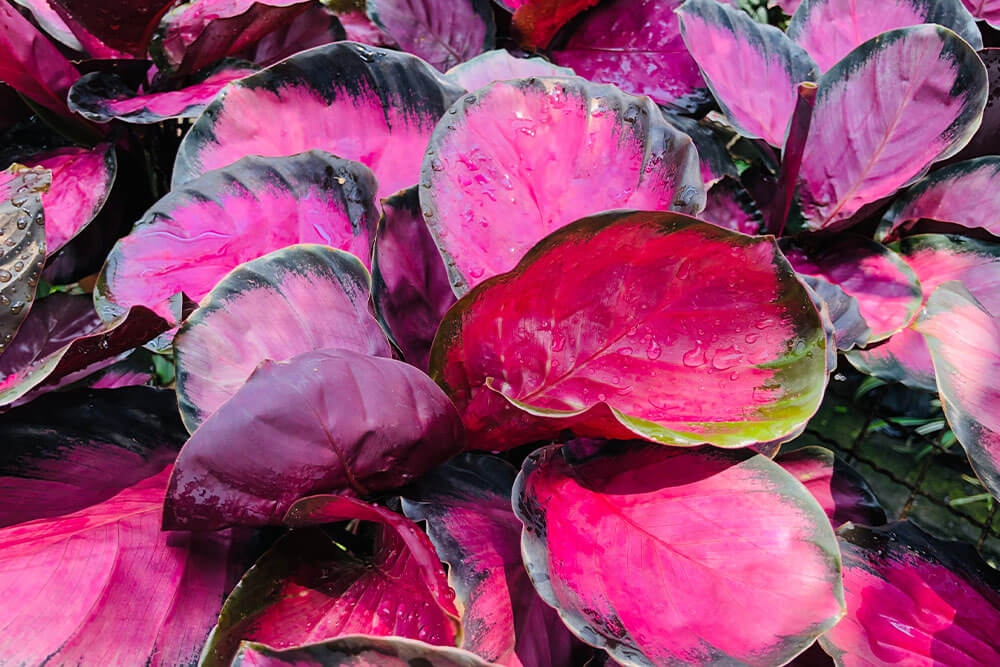
There is no doubt that the main feature of the crimson pink calathea, or Calathea roseopicta ‘Rosy,’ is the striking purple color that is present on the leaves. However, it is not only the color but also the pattern of the color that makes these leaves as interesting as they are. The majority of each leaf has a vibrant pink color that is nearly hot pink. Then, along the edge of each leaf, there is a thick bank of dark green. This color combination makes for great contrast and has caused the crimson-pink calathea to become a prized feature in any indoor garden display.
8. Dahlia (Dahlia ‘Bishop of Oxford’)
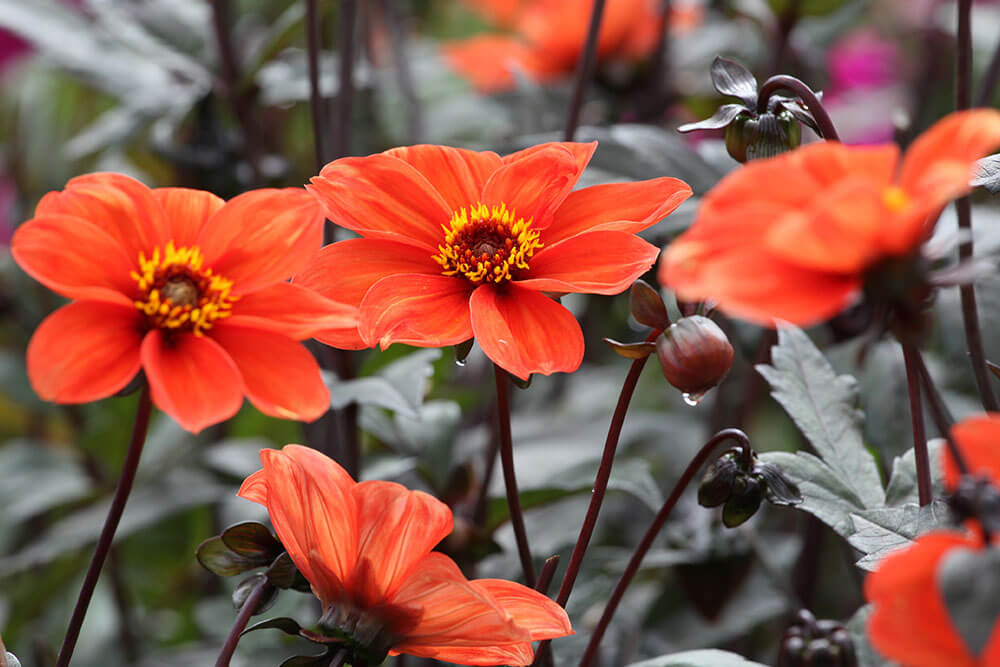
There are many elegant dahlia species that you can grow. In fact, dahlias are some of the most striking plants in existence, especially the varieties that have purple leaves. One such variety is known scientifically as Dahlia’ Bishop of Oxford.’ This dahlia has purple leaves and stems that are so dark that they can look nearly black at times. This darkness can give these dahlias a sinister look as well. However, the look is not complete without the bright orange blooms that juxtapose the dark foliage.
9. Diablo Ninebark (Physocarpus opulifolius ‘Monlo’)
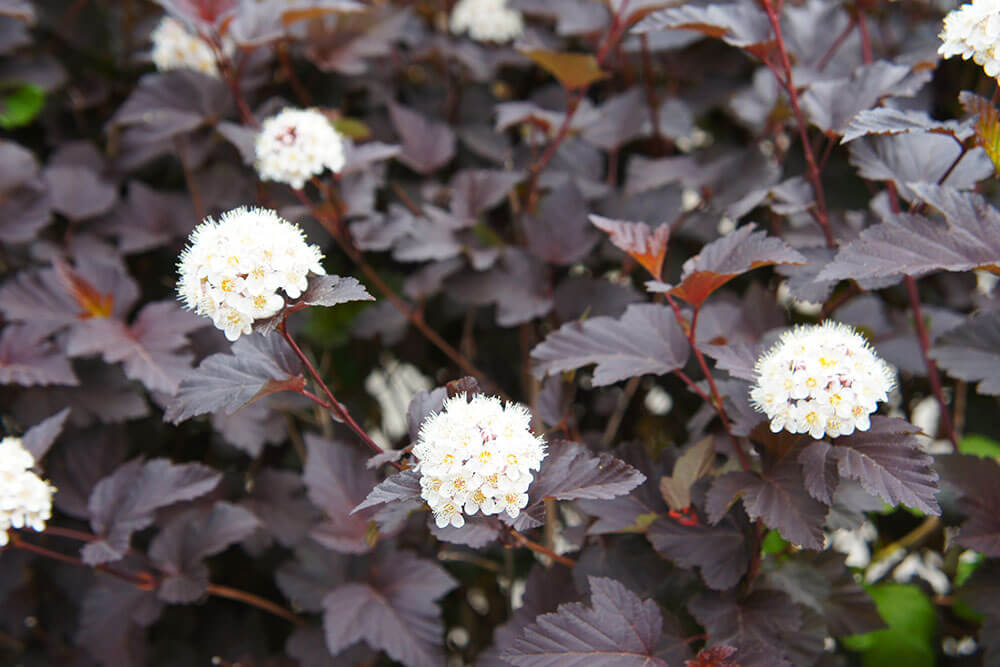
The diablo ninebark has a fitting name because, as was true of the last entry on our list, it is a plant with leaves that are such a dark purple that they are almost intimidating at first glance. However, like the dahlia before, the diablo ninebark has flowers that offset that serious tone to some degree. Each year, this shrub will pair its purple leaves with small white flower clusters that scatter themselves throughout the foliage. With the right conditions, the diablo ninebark will grow to about 8 to 10 feet tall, which means it can serve as a decent hedge.
10. Echeveria (Echeveria)
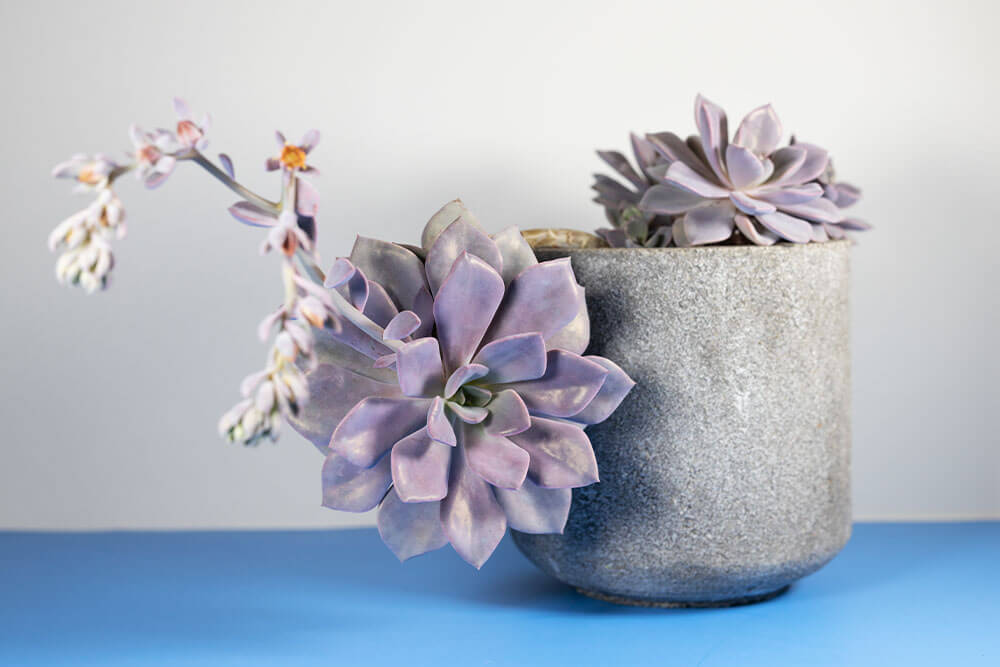
Having foliage with a light purple hue is just one of the ways in which the echeveria plant stands out among other plant options. Echeveria is also a succulent plant that is very popular for indoor growth and has foliage that arranges itself much like the petals of a rose flower. However, unlike a rose flower, the foliage of the Echeveria plant is thick and fleshy, as is true of most succulent varieties. At times, the color of that foliage can range from light purple to light green with purplish hints and accents.
11. Forest Pansy Eastern Redbud (Cercis Canadensis ‘Forest Pansy’)
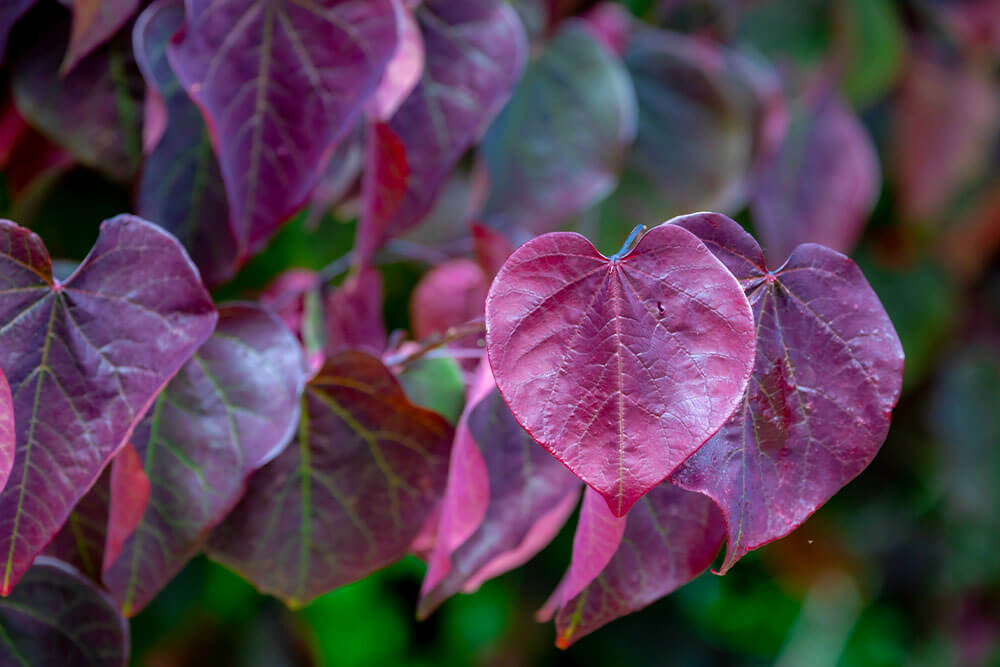
When planting a small tree with ornamental appeal, an Eastern redbud is one of the best options you can choose. These plants are native, which means they are great at supporting local wildlife. They are also early bloomers, with vibrant purple flowers that arrive in early spring. However, it is the forest pansy Eastern redbud variety that takes the purple theme to a whole new level. When you grow a forest pansy eastern redbud, you’ll notice that the large heart-shaped leaves have a light purple shade for at least part of the year.
12. Japanese Maple (Acer Palmatum)

If you are familiar with residential landscaping, then there is no doubt that you have come across some form of Japanese maple at some point. These small trees come in many different cultivated versions and are incredibly popular, in large part due to the color of this plant’s leaves. During most of the growing season, most Japanese maples will have reddish-purple leaves. These trees also have elegant growth habits that add to their appeal no matter the season.
13. Japanese Painted Fern (Athyrium Niponicum)
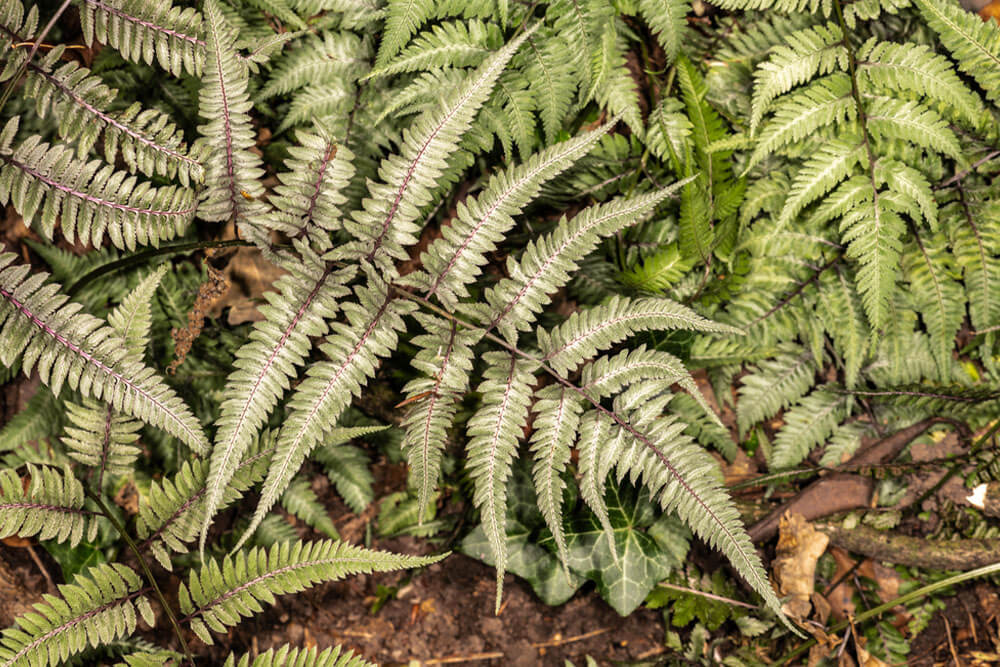
If you are like most people, then you would assume that ferns, while attractive for their habit and texture, are not all that interesting on the color front. However, nothing could be further from the case, at least when it comes to the Japanese-painted fern. This fern variety has an amazing color pattern that can include purple, silver, and more. Japanese-painted ferns are also a great perennial ground cover option for areas that do not receive a lot of light each day.
14. Moses in the Cradle (Tradescantia spathacea)
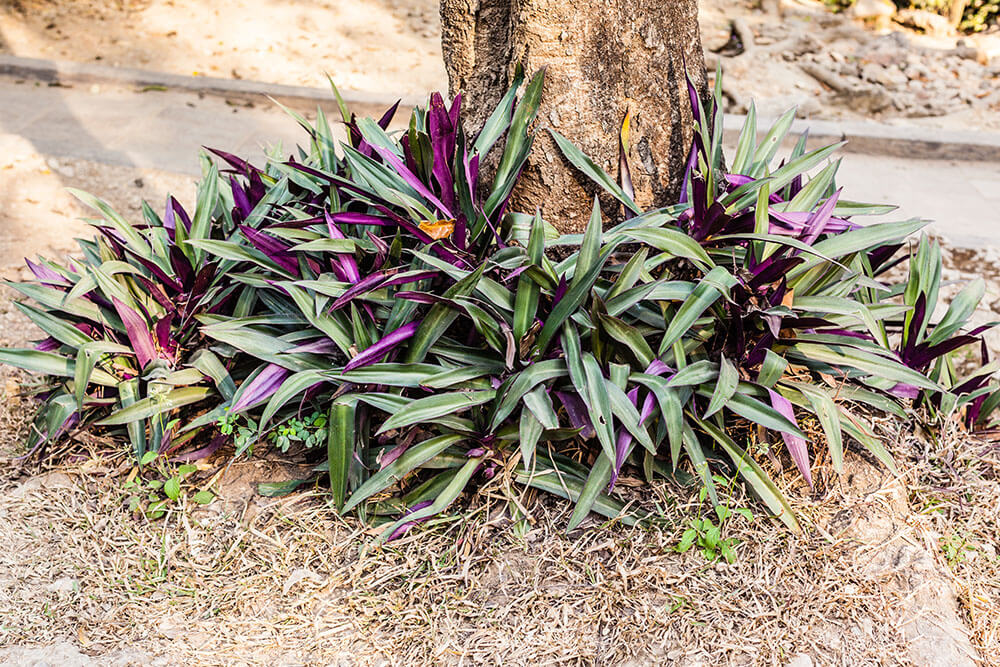
The leaves of the Moses in the cradle plant are long and slightly pointed at the tip. In most cases, those leaves will feature multiple colors simultaneously, which can include purple, white, and green. At times, those colors will appear as stripes that run along the length of each leaf and give the plant an amazing pastel-like appearance. In other cases, the Moses in the cradle plant will have leaves that are a solid color but may feature both solid purple and green leaves on the same plant.
15. Ornamental Cabbage (Brassica oleracea)
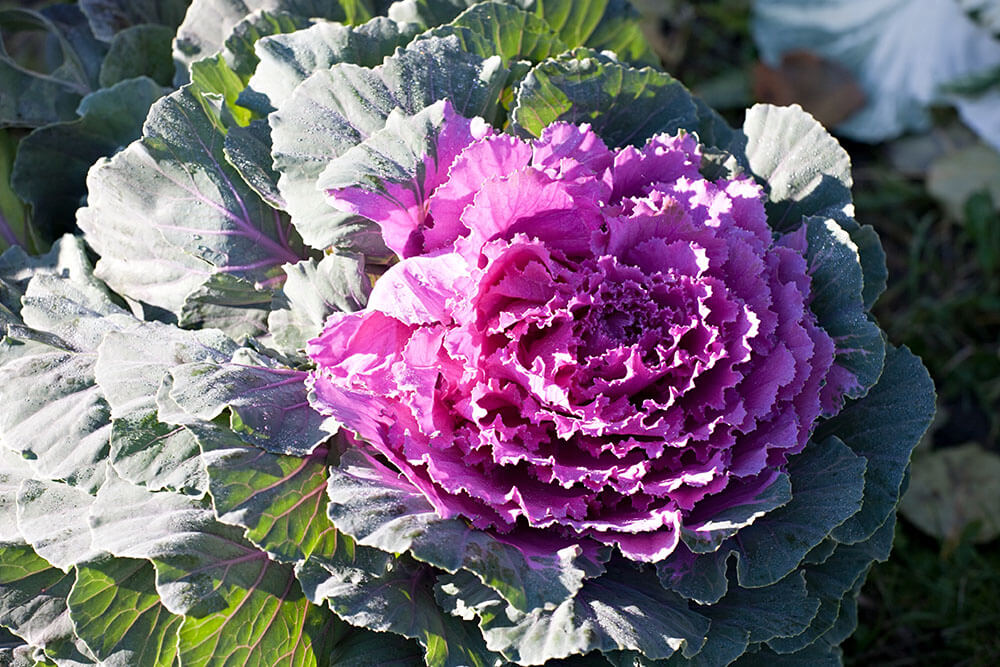
The term cabbage does not often bring to mind the idea of a lovely garden plant with attractive purple leaves. However, that is precisely what the ornamental cabbage will give you. The ornamental cabbage plant grows in a manner that looks quite similar to that of a typical cabbage. In some scenarios, the center of an ornamental cabbage will be white or yellow. At other times, the center will be a deep purple shade. Regardless of the center color, an ornamental cabbage usually features a ring of green foliage on the outside.
16. Persian Shield Plant (Strobilanthes dyerianus)
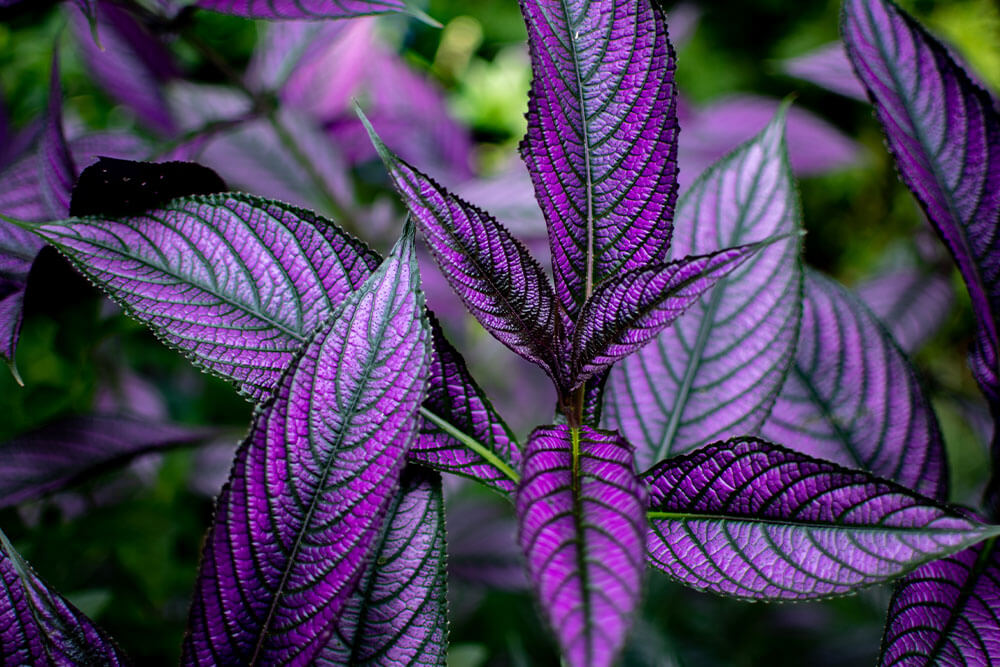
Admittedly, there are a few plants on our list that have light purplish leaves or leaves that are distinctly purple for only certain times of the year. However, there are also plants we’ve collected here that are so deeply purple that you could never deny their color. Such is the case for the Persian shield plant. This plant has pointed leaves that are almost like an elongated heart shape. Within each leaf, you’ll see a striking violet shade that covers most of the leaf. You’ll also see veins and margins that are dark green and give the plant much more depth in its appearance.
17. Polka Dot Plant (Hypoestes phyllostachya)
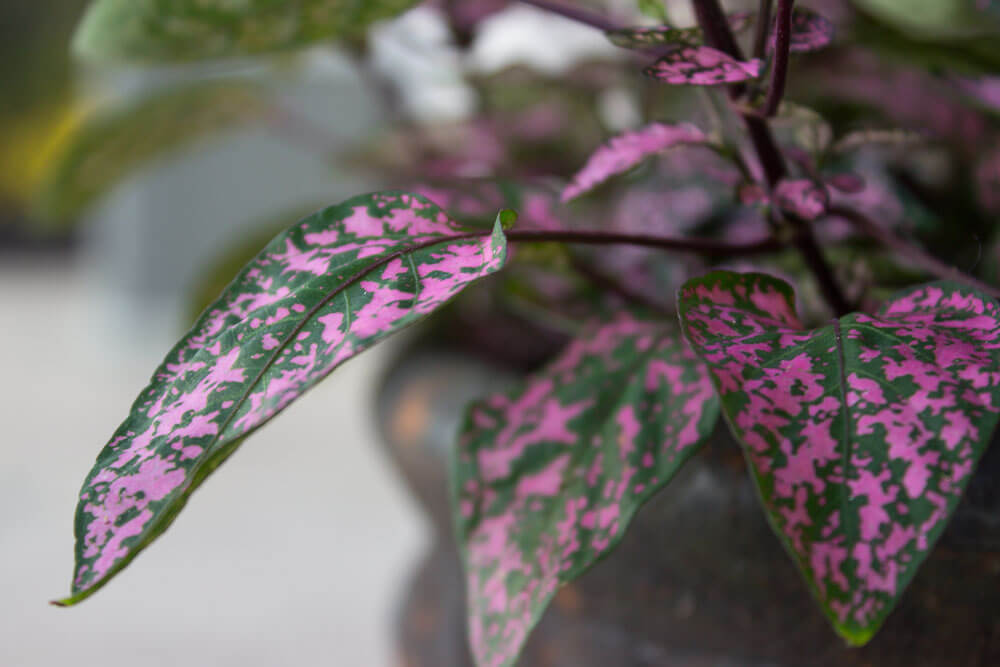
The polka dot plant is another plant with purple leaves that can thrive in indoor settings. In this case, the polka dot plant provides foliage that has an irregular speckled pattern. When growing this plant, you’ll see that its leaves have vibrant colors that appear splattered and can be purple, depending on the type of polka dot plant you own. However, no matter which type of polka dot plant you decide to grow, it will likely have the best foliage qualities when you provide bright indirect light in an indoor growing location.
18. Purple Elephant Ear (Colocasia esculenta ‘Black Magic’)
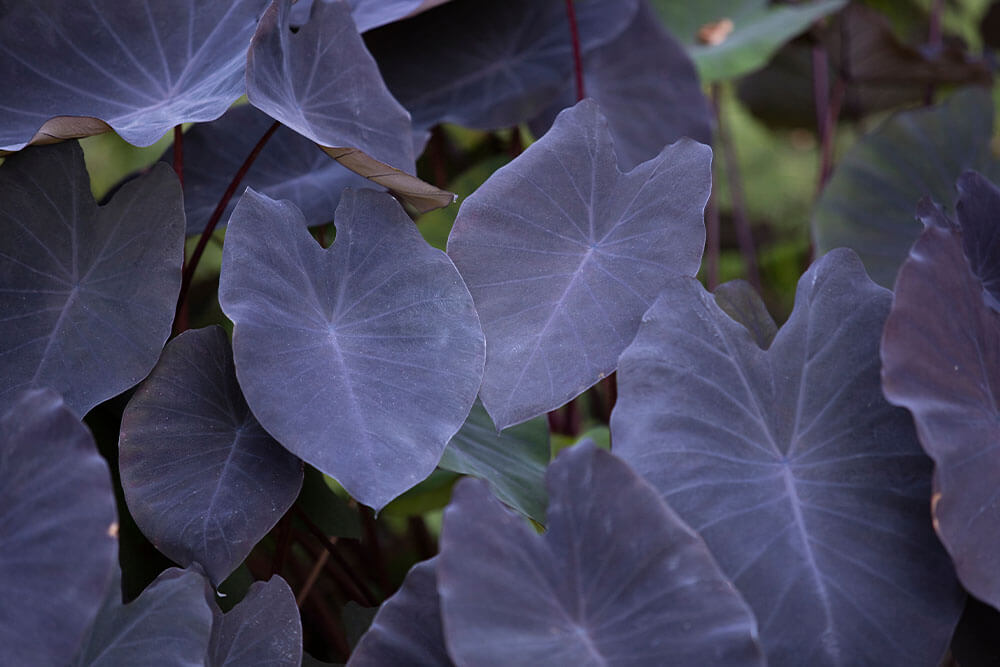
After one look at the purple elephant ear plant, you won’t need to wonder about where this plant gets its common name. The purple heart elephant plant has incredibly large leaves that bear a striking resemblance to the ears of an elephant. When you choose the elephant ear variety known as Colocasia esculenta ‘Black Magic’, you can rest assured that the entirety of each leaf on your plant will be a deep bluish-purple color. At times, each leaf can have a glossy texture, and they always provide a lovely tropical look.
19. Purple Heart Plant (Tradescantia pallida)
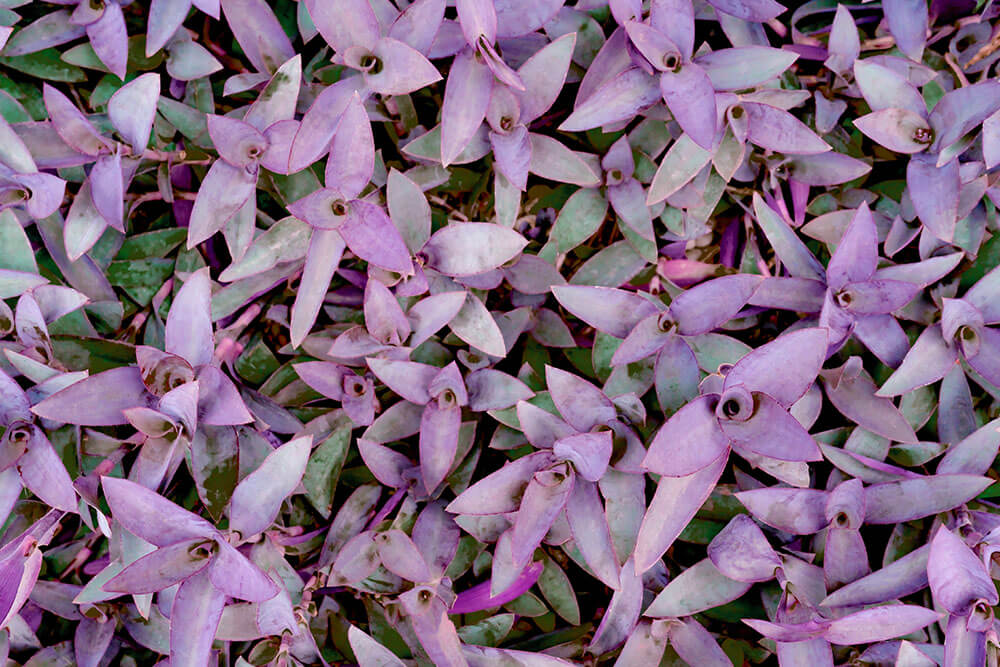
The purple heart plant is another plant with purple leaves on our list that also has lovely flowers as well. While the leaves of this plant have a purple shade that can be light or dark, the flowers are usually a bit brighter, with a pinkish-purple hue. The purple heart plant is small overall and makes for an excellent container species. Often, you’ll find this plant creates a cascade of purple foliage that overflows from the side of whatever pot you choose to grow it in. For the best results, make sure that you grow your purple heart plant in a location that receives full sunlight each day.
20. Purple-Leaf Plum (Prunus cerasifera ‘Krauter Vesuvius’)
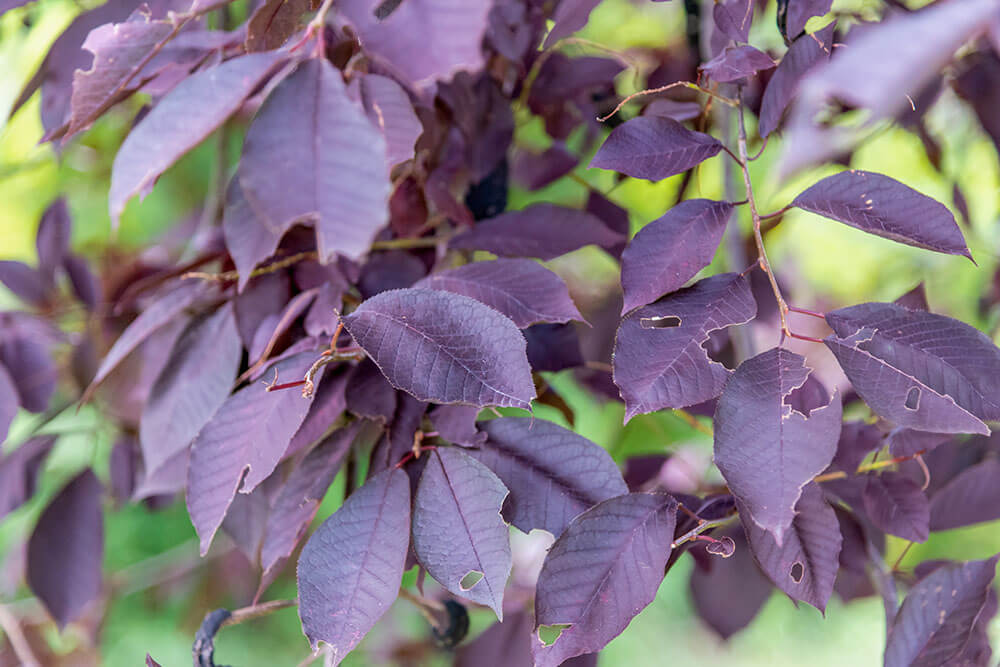
The purple-leaf plum tree is a small to medium-sized tree that people do not grow for the sake of harvesting fruits. Instead, the main reason that people plant a purple-leaf plum is to admire its beauty, much of which arises from the dark purple leaves that this deciduous plant holds in the spring and summer. In spring, this tree will also bloom with light pink flowers. Generally, purple-leaf plum trees are easy to care for throughout their lives. However, if you want to maximize the brilliance of your plant’s leaves, you should plant them where there is full sunlight.
21. Purple Sand Cherry (Prunus x cistena)
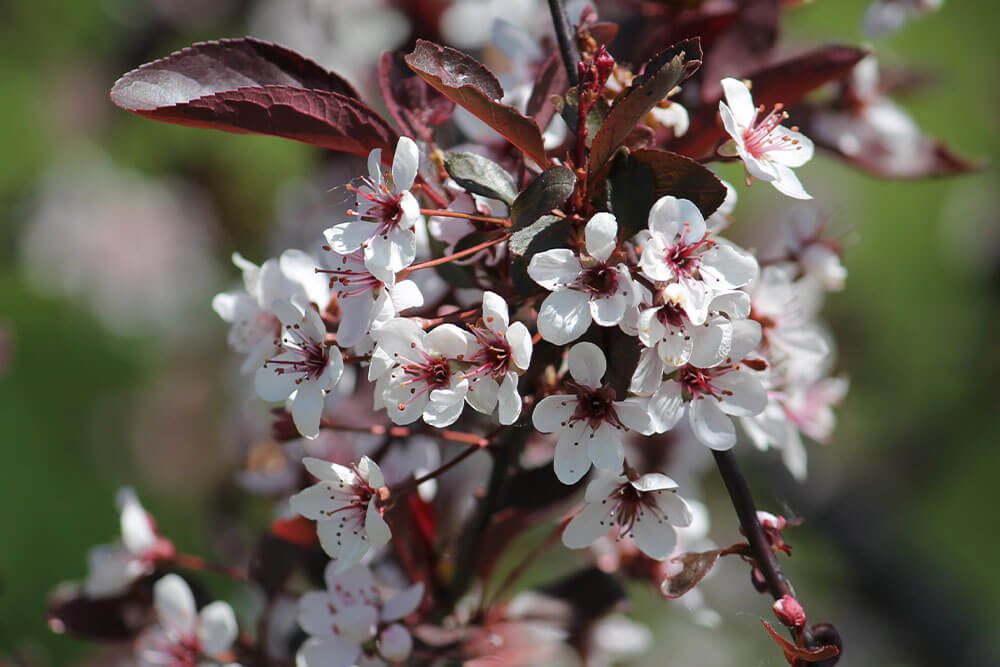
Much like the last entry on our list, this one is slightly misleading in name since it is not a plant that people grow for the sake of fruit development. Instead, similar to the purple leaf plum, the purple sand cherry is an ornamental species. This tree is also on the smaller side as it reaches about ten feet tall with a rounded and upright canopy. This small size makes the purple sand cherry the ideal tree to grow if you love plants with purple leaves, but struggle to find plants that can fit in your limited growing area.
22. Purple Majesty Pennisetum (Pennisetum glaucum’ Purple Majesty’)
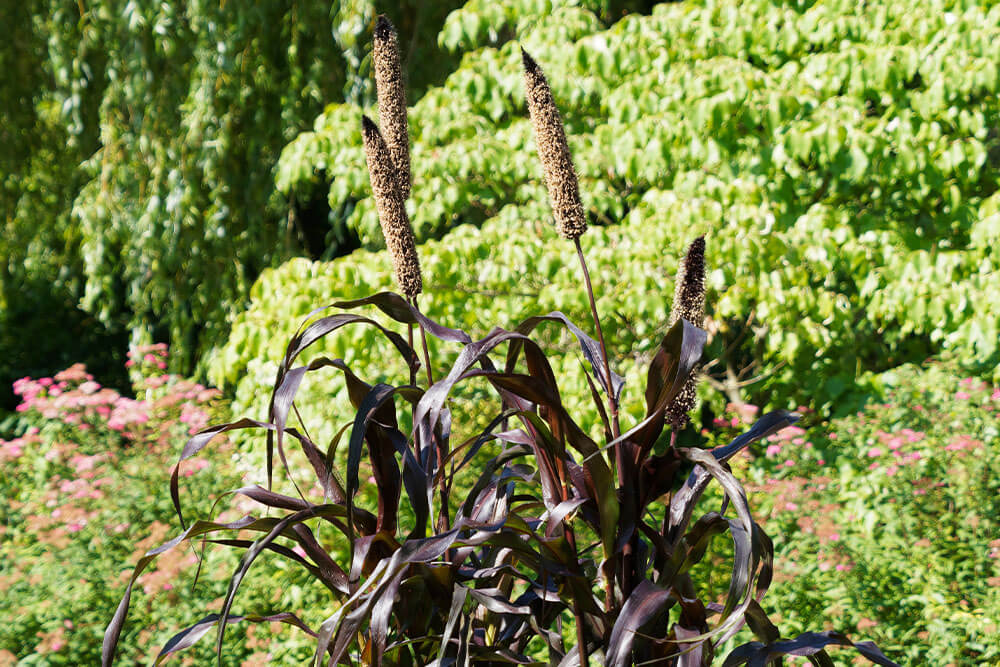
We have reached the point on our list when the plants truly begin to proclaim how regal their purple leaves are. In this instance, the purple majesty Pennisetum is as majestic as any other plant you can find. This plant is an ornamental perennial grass that usually reaches about three to four feet tall and is almost entirely purple. But while this plant claims to be majestic, it remains durable as well. In fact, an established purple majesty Pennisetum will have admirable drought tolerance and won’t call for much intensive maintenance either.
23. Purple Velvet Plant (Gynura aurantiaca)
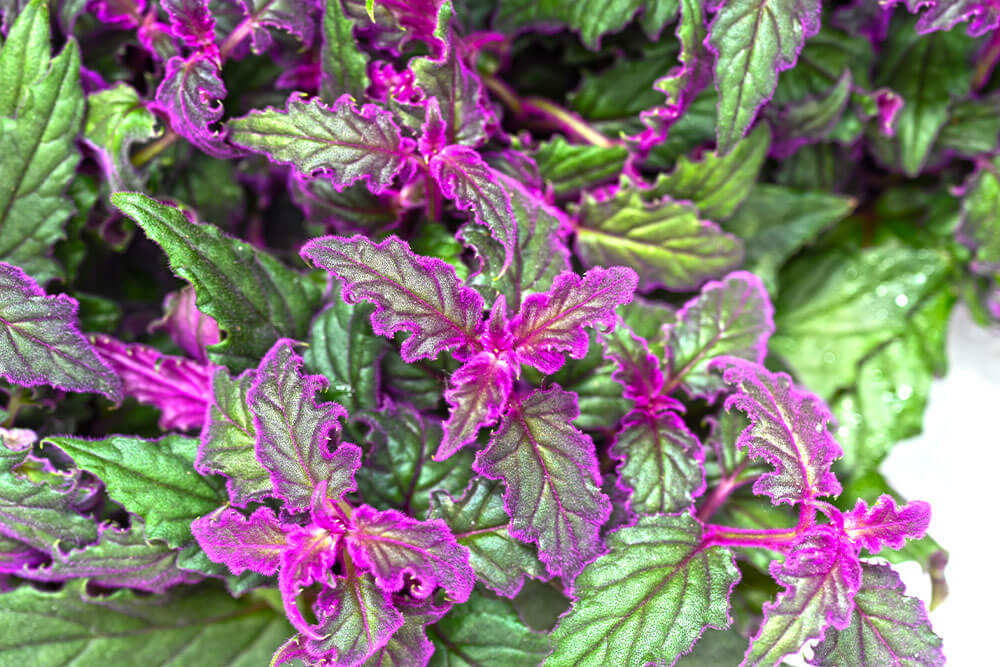
The purple velvet plant, which can also go by the name purple passion plant, is a species with foliage that truly seems to glow. Each leaf has a generally pointed shape with a dramatic irregular margin. For the most part, these leaves are a dull green. However, this plant has many tiny purple hairs that provide color and a certain shine to each leaf. With bright indirect light and a moderate amount of water, the purple velvet plant can be the ideal purple feature in an indoor planting scheme.
24. Royal Purple Smoke Tree (Cotinus coggygria ‘Royal Purple’)
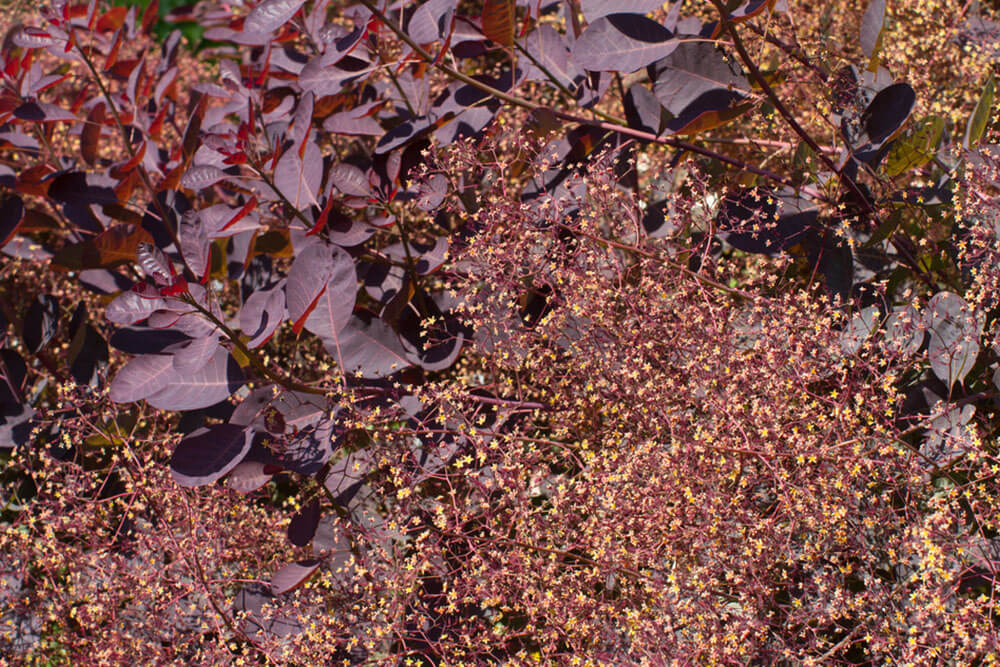
For any gardener that prefers to have purple growing in their yard, the royal purple smoke tree is a plant you won’t soon forget. For starters, this small tree has excellent deciduous foliage that is almost a perfect oval shape and has a dull greenish-purple shade. But what makes the royal purple smoke tree truly spectacular is its seed clusters. Those seed clusters are large and have a smoke-like appearance. Since they are also pinkish purple in color, the royal purple smoke tree proves to be capable of delivering more purple than most trees.
25. Weigela (Weigela florida ‘Wine & Roses’)
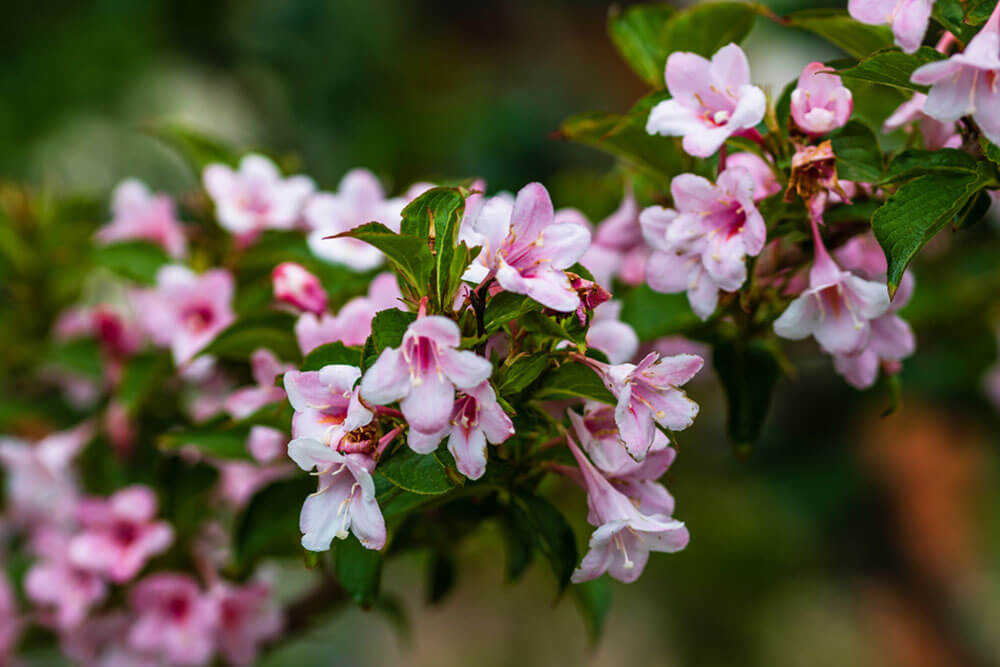
No matter what type of weigela you grow, it is sure to make your garden look incredible thanks to its gorgeous blooms. However, if you are someone who likes purple leaves, then the Weigela florida ‘Wine a & Roses’ variety is the best type for you. This plant has deep purple leaves and lighter flowers as well. Overall, weigelas, whether they have purple leaves or not, are popular for their appearance and the fact that they are easy to care for and keep alive.
[wp-faq-schema title=”Frequently Asked Questions About Plants with Purple Leaves” accordion=1]To many, the world of plants with purple leaves is both alluring and mysterious. This leads many plant enthusiasts to have questions about this plant group. To help alleviate your curiosity, we have answered a few of the most frequently asked questions about plants with purple leaves below.
25 Impressive Types of Plants with Purple Leaves that Add Immense Appeal
Since so many of the plants we love to grow in our gardens have green leaves, any variety that offers a different color, such as purple, is sure to stand out. The good news is, if you are someone who wants to add an eye-catching splash of purple to their landscape, there are plenty of plants to choose from. As our list shows, the group of plants with purple leaves is so vast and diverse that it can surely offer something for everyone.


